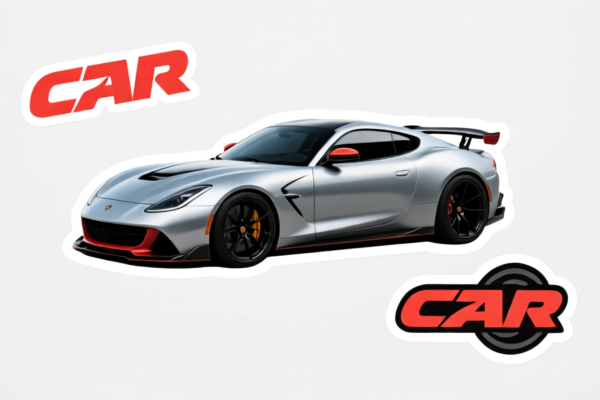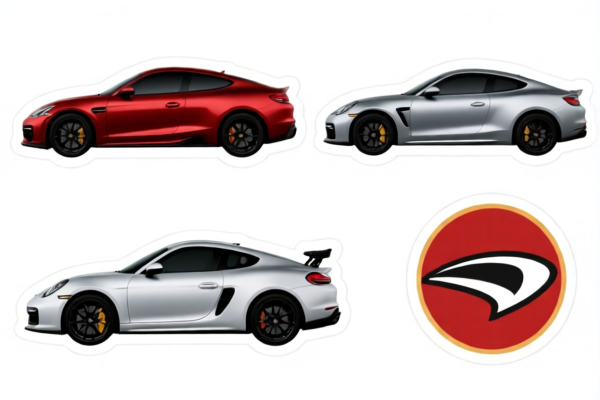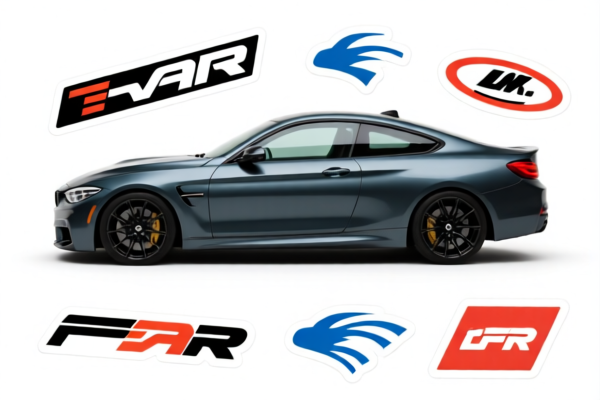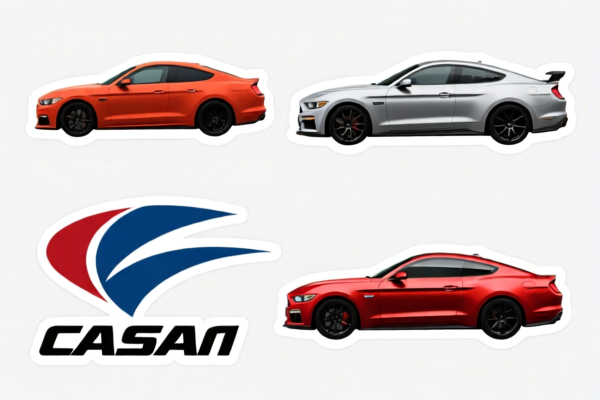| HS Code | Official Doc | Tariff Rate | Origin | Destination | Effective Date |
|---|---|---|---|---|---|
| 9701990000 | Doc | 37.5% | CN | US | 2025-05-12 |
| 4906000000 | Doc | 37.5% | CN | US | 2025-05-12 |
| 3919905060 | Doc | 60.8% | CN | US | 2025-05-12 |
| 3919905010 | Doc | 60.8% | CN | US | 2025-05-12 |
| 3921904010 | Doc | 34.2% | CN | US | 2025-05-12 |
| 3921904090 | Doc | 34.2% | CN | US | 2025-05-12 |
| 4908100000 | Doc | 37.5% | CN | US | 2025-05-12 |
| 4908900000 | Doc | 37.5% | CN | US | 2025-05-12 |
| 4911914040 | Doc | 37.5% | CN | US | 2025-05-12 |
| 4911998000 | Doc | 37.5% | CN | US | 2025-05-12 |




Car Stickers
Car stickers, also known as vehicle decals, are adhesive vinyl graphics applied to the exterior or interior surfaces of automobiles. They serve a variety of purposes, ranging from aesthetic customization to branding and informational display.
Material
The primary material for car stickers is vinyl. Different types of vinyl are used based on desired durability, finish, and application. Common types include:
- Monomeric Vinyl: Least expensive, suitable for short-term applications (weeks to months). Prone to cracking and fading with prolonged exposure.
- Polymeric Vinyl: Offers better durability (years) and resistance to weathering than monomeric vinyl. Commonly used for general-purpose car stickers.
- Cast Vinyl: Highest durability (5-12 years+), excellent resistance to shrinking, cracking, and fading. Ideal for complex designs and long-term applications.
- Reflective Vinyl: Incorporates reflective particles for enhanced visibility, often used for safety markings or branding.
- Transparent Vinyl: Allows the underlying car paint to show through, creating unique effects.
Adhesive types vary as well, with permanent and removable options available. Removable adhesives are designed to be peeled off without damaging the paint surface.
Purpose & Function
- Aesthetic Customization: The most common purpose. Stickers allow vehicle owners to personalize their cars with designs, patterns, or artwork.
- Branding & Advertising: Businesses use car stickers to promote their products or services by displaying logos, contact information, or marketing messages.
- Identification: Stickers can indicate vehicle ownership, affiliation with a group or organization, or participation in events.
- Safety & Warning: Reflective stickers or warning labels can enhance visibility or communicate important information.
- Decorative: Used for adding visual interest, covering scratches, or creating a unique look.
Usage Scenarios
- Personal Vehicles: Cars, trucks, SUVs, motorcycles, and vans.
- Commercial Fleets: Company vehicles for branding and identification.
- Event Promotion: Advertising events or sponsorships.
- Racing & Motorsports: Displaying team logos, sponsor names, and driver numbers.
- Window Graphics: Applied to car windows for advertising or privacy.
Common Types
- Die-Cut Stickers: Cut to the exact shape of the design.
- Vinyl Lettering: Individual letters or words cut from vinyl.
- Full Color Stickers: Printed with multiple colors and gradients.
- Bumper Stickers: Typically rectangular stickers applied to the bumper.
- Window Decals: Applied to car windows, often with perforated vinyl for visibility.
- Static Cling Stickers: Use static electricity to adhere to the surface, easily removable.
- 3D Dome Stickers: Feature a raised, three-dimensional effect.
- Reflective Stickers: Made with reflective material for enhanced visibility.
Car stickers can generally be categorized based on their material, adhesive properties, and intended use. Based on the provided information, the following HS codes may be relevant:
- 3919905060: This HS code covers self-adhesive plates, sheets, film, foil, tape, strip and other flat shapes, of plastics, whether or not in rolls, classified as “Other: Other”. This is applicable if the car stickers are made of plastic and are self-adhesive. The tax rate is 5.8% basic tariff, 25.0% additional tariff, and 30.0% additional tariff after April 2, 2025, resulting in a total tax rate of 60.8%.
- 3919905010: This HS code also covers self-adhesive plates, sheets, film, foil, tape, strip and other flat shapes, of plastics, whether or not in rolls, specifically classified as “Other: Other Reflectorized sheeting”. If the car stickers are made of plastic, self-adhesive, and have reflective properties, this code applies. The tax rate is the same as 3919905060: 5.8% basic tariff, 25.0% additional tariff, and 30.0% additional tariff after April 2, 2025, for a total of 60.8%.
- 4911998000: This HS code covers other printed matter, including printed pictures and photographs, classified as “Other: Other: Other”. If the car stickers are printed designs, this code may be applicable. The tax rate is 0.0% basic tariff, 7.5% additional tariff, and 30.0% additional tariff after April 2, 2025, resulting in a total tax rate of 37.5%.
It is important to determine the material composition and properties of the car stickers to select the most accurate HS code. If the stickers are made of plastic and self-adhesive, either 3919905060 or 3919905010 may be appropriate, depending on whether they are reflectorized. If they are primarily printed designs, 4911998000 may be the correct choice.
Customer Reviews
No reviews yet.